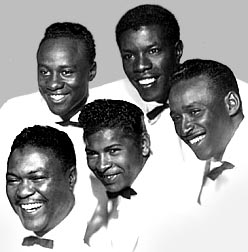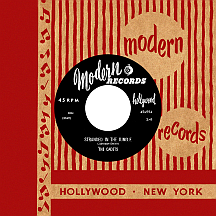THE CADETS
Stranded in the Jungle
Daniel Defoe's best-selling 1719 novel The Life and Strange Surprizing Adventures of Robinson Crusoe was still extremely popular more than two centuries after its publication. Part of the story dealt with Crusoe's encounter with (and escape from) cannibals, a hair-raising section of the book that isn't easily forgotten. Starting in the silent film era, man-eating protagonists of this type were often played for laughs (not everyone's idea of humor) in animated cartoons, one of the earliest being Professor Bonehead is Shipwrecked from 1916, produced by the Gaumont Company, a pioneering film studio based in France. A stereotype of these mildly offensive island natives persisted and moviegoers became quite familiar with the scenario: the main character encounters tribes with large cooking pots and is promptly placed in one; villagers usually add vegetables and various seasonings to the "human soup," then as the water approaches the boiling point, our hero escapes simply by creating a distraction, jumping out of the pot and running away. The good news for viewers' nervous systems: no one ever got eaten!
After sound was added to film in the late 1920s, there were at least two dozen cartoons produced with only slight adjustments to this thin plot. The bigger studios inevitably got around to producing their own variations, thus many of the top animated characters of the era starred in one (or more) as a tedious pattern emerged. Bud Fisher's popular comic strip characters Mutt and Jeff used the storyline in the 1926 short Aroma of the South Seas, a silent that was re-released several years later with sound added. Walt Disney's first entry came in 1930 with Cannibal Capers, an early Silly Symphony cartoon. Warner's Looney Tunes series followed suit a year later with Bosko Shipwrecked! and Disney recycled the plot in 1932's Trader Mickey (wherein Walt's top star Mickey Mouse and his dog Pluto found themselves in separate cooking pots). Max Fleischer's famous flapper girl Betty Boop starred in two jungle adventures in 1932: Betty Boop's Bamboo Isle and I'll Be Glad When You're Dead You Rascal You, the latter also starring Louis Armstrong, who performed his hit song (the cartoon's title) appearing as a live-action floating head! Walt's superstar mouse did a more obvious take on the Crusoe story in the '35 short Mickey's Man Friday; in '36 there was a Van Beuren cartoon, Molly Moo and Robinson Crusoe, and a stop-motion animated George Pal Puppetoon, Hoola Boola (check out the big clay cauldron!), appeared in '41, the same year Porky Pig's turn came with Robinson Crusoe, Jr. As late as 1951, MGM's Tom and Jerry appeared in His Mouse Friday, the cooking pot and vegetables still playing a major role. Children growing up during television's formative years of the '50s and '60s couldn't have missed seeing these popular, often-rerun cartoons.
In 1956, after the bizarre jungle/cannibal/boiling cauldron cartoon craze had seemingly run its course, rhythm and blues group The Jayhawks recorded their original version of "Stranded in the Jungle" for the Flash record label run by Charlie Reynolds, who coincidentally owned the Flash Record Shop on East Vernon Avenue in Los Angeles. The song was written by James Johnson, the group's first tenor, and Ernestine Smith, a sales clerk at the record store who came up with the idea for the arrangement that played out like a rock and roll cartoon, with a disaster-movie beginning ('I crashed in the jungle while tryin' to keep a date...') that shifted scenes from '...back in the States' to '...back in the jungle.' Carlton Fisher, Rene Beard, Cleo White and Carver Bunkum were the Jayhawks' other vocalists; the quartet put out three singles for Flash in '56 ("Stranded" was the second) and two for Aladdin in '57 as The Jay-Hawks.

Shortly after the single appeared on the national charts in June '56, a version by another L.A. group, The Cadets, appeared on Modern, a label founded nearly a decade earlier by The Bihari Brothers (Lester, Saul, Jules and Joe). The former gospel quintet had been signed by A&R man Maxwell Davis in the spring of 1955 and the Biharis figured recording them as two groups might harvest twice as many hits. As The Jacks they appeared on RPM and focused on romantic tunes featuring lead singer Willie Davis, while the Cadets' Modern output had an uptempo novelty flair led by Aaron Collins and bass man Will "Dub" Jones. The other members were baritone Lloyd McCraw and tenor Ted Taylor, though the latter departed midway through '56 and was replaced by Prentice Moreland.
While providing backing vocals for some of Richard Berry's Flair label releases and Donna Hightower's singles on RPM, the Jacks suddenly bounced onto the charts, making the R&B top ten in the fall of '55 with "Why Don't You Write Me?" (the original version, penned by Laura Hollins, had just been released by L.A. group The Feathers). The classic ballad has been recorded by many artists over the years. Several months later the Cadets' "Stranded in the Jungle" gave the Jayhawks' original a run for its money; the band was hotter, harmonies were tighter ('Baby, baby, let's make romance...you know your old time lover hasn't got a chance...') and lead vocals were stronger ('I smelled somethin' cookin' and I looked to see...that's when I found out they was a-cookin' me!').
All of a sudden a handful of radio stations started playing a third version of "Stranded" on Mercury by a white group from Chicago, The Gadabouts (Johnnie Barr, Eddie Hayes, Larry Craig and the track's scratchy-voiced lead, "Wild Bill" Putnam). With a look less cool than your average mid-'50s rockers, these guys had been struggling for the better part of three years, walking a line between pop, rock and teen-styled tunes. Songs like "(You Make My Heart) Go Boom Boom" and "Busy Body Rock" had a fun feel, but nothing hit the mark until they threw their hats into the "Jungle" pot. By late summer 1956 the pecking order of popularity had become clear: the Cadets had the biggest version, a top 20 hit (and number three R&B), the Jayhawks' original also went top 20 (and top ten R&B) and the Gadabouts had managed to slip briefly into the top 40.
The Cadets/Jacks alternated releases through 1955 and '56 before continuing strictly as the Cadets. Towards the end of the year they sang, uncredited, on 15-year-old Paul Anka's debut single "I Confess" on RPM. In 1959 they supplied the backing vocals, again without credit, for Ronnie Hawkins' hit "Mary Lou." Aaron Collins moonlighted as a manager of sorts for his sisters Betty and Rose Collins, who recorded for RPM as The Teen Queens. Dub Jones bailed on the Cadets around 1958 and joined the much more successful Coasters in time to lend his funny deep-voice quips to several red-hot late-'50s hits. Future slick soul man Ted Taylor went from Ebb to Duke to Top Rank to a bevy of other labels (as Austin Taylor, he recorded "Push Push" for Laurie Records in 1959) before settling in at Okeh Records in the mid-'60s and Ronn up through the mid-'70s, building a strong base of fans along the way.
Despite making some well-produced novelty-style discs ("Love Bandit," "Baby Ya Know"), The Cadets called it quits before the decade ended. Davis and Collins recorded with The Flares (of "Foot Stompin'" fame) around '61. Elsewhere in the L.A. jungle The Jayhawks forged ahead (not without roster changes) taking a cue from the Jacks/Cadets playbook, doubling up as The Marathons (with a 1961 hit, "Peanut Butter") and a more permanent name, The Vibrations (starting "The Watusi" dance craze and remaking "Stranded in the Jungle" in '61, then scoring in '64 with the first hit version of "My Girl Sloopy") before running out steam in the mid-'70s. And that about covers it. 'Great googa-mooga, lemme outta here!'


